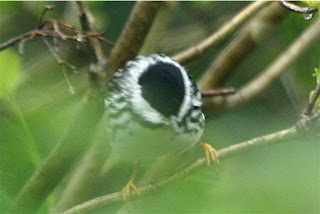
A handsome little male Yellow Warbler has been flitting
 about among the leaves of Bird Alley, our feeder area, for the past couple of days but it is difficult to get a photo of it without it being in motion. It is darting here and there, occasionally coming into full view but most often I just get a glimpse of it
about among the leaves of Bird Alley, our feeder area, for the past couple of days but it is difficult to get a photo of it without it being in motion. It is darting here and there, occasionally coming into full view but most often I just get a glimpse of it  now and then. This is character -istic of warblers for these tiny insect eating birds are often on the move. This male Yellow Warbler is easily identified by the red streaking on its yellow breast.
now and then. This is character -istic of warblers for these tiny insect eating birds are often on the move. This male Yellow Warbler is easily identified by the red streaking on its yellow breast.

.jpg)
.jpg)




.jpg)
.jpg)



.jpg)
.jpg)
.jpg)

.jpg)





.jpg)
.jpg)

.jpg)



.JPG)
.JPG)


.jpg)









.jpg)
.jpg)

